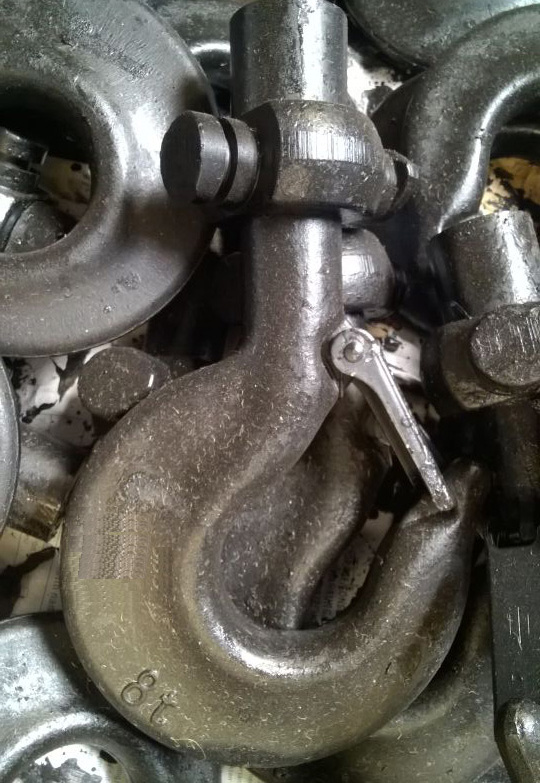Inspections of hoist hooks
Hooks should be visually inspected during the normal course of use by the operator as well as periodically by a designated or qualified individual. The frequency and documentation requirement of the periodic inspection shall be dependent on the type of equipment in which the hook is used, but at least annually. During the inspection, some of the conditions that should be looked for include:

Safety inspection
1. The hook for the human-powered hoisting mechanism is tested with 1.5 times rated load as test load.
2. The hook for the power-driven hoisting mechanism is tested with 2 times the rated load as the test load.
3. After the hook removed from the inspection load, there shall be no obvious defects and deformation, and the increase of the opening shall not exceed 0.25% of the original size.
4. For the qualified hook, the mark should be printed in the low stress area of the hook, including the rated lifting weight, the factory name, the inspection mark, the production number and so on.
Hooks should be scrapped when one of the following conditions occurs:
1 Crack;
2 The dangerous section wears up to 10% of the original size;
3 opening degree is increased by 10% compared with the original size;
4 Hook body torsional deformation more than 10 °;
5 Hazardous section of the hook or plastic deformation of the hook neck;
6 Hook thread is corroded;
Safety precautions
1. The hook should be manufactured by official professional factory according to the technical conditions and safety specifications. The product should have the quality certificate of the manufacturer, otherwise it is not allowed to use.
2. The new hook should be load tested. The opening of the hook should not exceed 0.25% of the original opening.
3. Always check the hook for cracks or severe deformation, corrosion and wear during use.
4. The hook should be tested once a year. The test shall be carried out with a 1.25 times working load for a static test of 10 minutes. Check with a magnifying glass or other methods. There shall be no cracks, cracks or residual deformation.
5. Apply kerosene cleaning to three dangerous sections, and use a magnifying glass to see if there is any crack. Check the bushing and pin wear on the plate hook.
6. The defects on the hooks shall not be repaired.

